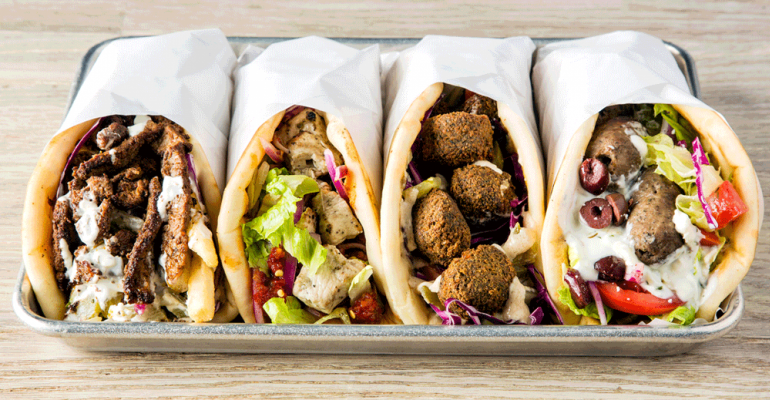First came better burgers, which paved the way for a world of richly creative sandwich shops, customizable salad concepts, bakery-cafes and, of course, a crowd of “fresh Mex” restaurants, from Baja Fresh to Chipotle Mexican Grill.
This was the early evolution of the fast-casual segment — the vast and still-growing space that falls somewhere between fast food and casual dining.
Now that consumers have proven that they want — and are willing to pay for — the convenience and better ingredients fast casual has to offer, the segment is evolving.
The new wave of fast-casual concepts is strikingly more ethnic, applying the familiar counter-service format and contemporary design to cuisines from around the world.
Within certain niches, ethnic concepts are racing to plant their flag and declare world domination. Fast-casual Mediterranean is the most crowded, with several national chains already leading the way, including Zoës Kitchen, Cava, Luna Grill and Garbanzo Mediterranean Fresh. Still, around the country smaller challengers continue to emerge.
That’s also true in other categories: poke has become a huge fast-casual contender, trading on the love American consumers already have for the flavors of sushi.
As Korean flavors become more popular, so are fast-casual variations on bibimbap bowls.
And a niche for fast-casual Indian cuisine is also growing, with simpler menus that allow for customization.
Chipotle Mexican Grill founder Steve Ells once boasted that the build-your-own-meal model could apply to just about any cuisine with the right emphasis on ingredients and a focused menu.
But the Denver-based chain was not able to prove that theory. Its ShopHouse Southeast Asian Kitchen concept grew to about 15 locations before it was sold to Bibibop Asian Grill last year. Chipotle’s foodborne illness crisis at the time likely put a damper on ShopHouse’s chances for success.
However, many in the fast-casual world will likely prove Ells right in the end.
Fundamentally, the answer may not be in Chipotle’s model, but in overcoming the challenge of translating a complex cuisine into systems that can be replicated and multiplied, while maintaining a menu that is fresh and affordable.
Take a look at the landscape of emerging fast-casual concepts.
Contact Lisa Jennings at [email protected]
Follow her on Twitter: @livetodineout





